-
01-01-2015
Ineffective airway clearance: accuracy of clinical indicators in asthmatic children
Revista Brasileira de Enfermagem. 2015;68(5):862-868
Abstract
Ineffective airway clearance: accuracy of clinical indicators in asthmatic children
Revista Brasileira de Enfermagem. 2015;68(5):862-868
DOI 10.1590/0034-7167.2015680514i
Views0See moreABSTRACT
Objective:
to analyze the accuracy measurements of clinical indicators of the nursing diagnosis Ineffective airway clearance.
Method:
cross-sectional study with 205 asthmatic children treated in the emergency unit of a hospital in the city of Fortaleza, Ceará. An interview script and pulmonary evaluation were used for data collection.
Results:
the diagnosis of Ineffective airway clearance was present in 89.3% of the sample. The most prevalent clinical indicators were dyspnea, change in respiratory rate, change in respiratory rhythm, orthopnea, adventitious respiratory sounds and ineffective cough. The clinical indicators with highest sensitivity were dyspnea, change in respiratory rate, change in respiratory rhythm, orthopnea and adventitious respiratory sounds. Ineffective cough and adventitious respiratory sounds were the indicators with best specifi city.
Conclusion:
the clinical indicator adventitious respiratory sounds was the best predictor of Ineffective airway clearance in asthmatic children treated in emergency units.
-
01-01-2015
Mortality from external causes in Pernambuco, 2001-2003 and 2011-2013
Revista Brasileira de Enfermagem. 2015;68(5):855-861
Abstract
Mortality from external causes in Pernambuco, 2001-2003 and 2011-2013
Revista Brasileira de Enfermagem. 2015;68(5):855-861
DOI 10.1590/0034-7167.2015680513i
Views0See moreABSTRACT
Objective:
to describe the mortality from external causes, by Health Regions in Pernambuco, during the periods of2001-2003 and 2011-2013.
Method:
descriptive study with data from the Mortality Information System. For data analysis we used percentage, percentage variation and proportion ratio.
Results:
mortality from external causes reduced in Pernambuco, however, mortality increased in some health regions of the countryside. Increased numbers of deaths from accidents and event of undetermined intent were registered. There was an increase of deaths classified as “other/unspecified” event of undetermined intent.
Conclusion:
there was a change in the spatial distribution of mortality from external causes moving to Pernambuco countryside regions. We found necessity for data classification regarding deaths from external causes and strengthening of the monitoring.
-
01-01-2015
Evaluation of scientific production, patents and human resources training in the Brazilian nursing
Revista Brasileira de Enfermagem. 2015;68(5):846-854
Abstract
Evaluation of scientific production, patents and human resources training in the Brazilian nursing
Revista Brasileira de Enfermagem. 2015;68(5):846-854
DOI 10.1590/0034-7167.2015680512i
Views0See moreABSTRACT
Objective:
to evaluate scientifi c production, patents and human resources training of nursing researchers with scholarships of research productivity (PQ) in National Counsel for Technological and Scientific Development (CNPq) in the 2000-2012 historic series; to verify the association between this production and characteristics of the researchers regarding gender, education and origin.
Methods:
this analytic cross-sectional study whose inclusion criterion was to be a nursing PQ/CNPq researcher during the period in question. We analyzed curriculum lattes of 208 researchers with scholarships between 2000 and 2012. For statistical analyses we used the SPSS® software.
Results:
the study points to female predominance, concentration in the Southeast region and existence of an association between scientific production, patents and human resources training and education, gender and origin of the researcher.
Conclusion:
the study presents a significant participation of nursing PQ/CNPq researchers in scientific production and in human resources training, and a modest involvement in the production of patents.
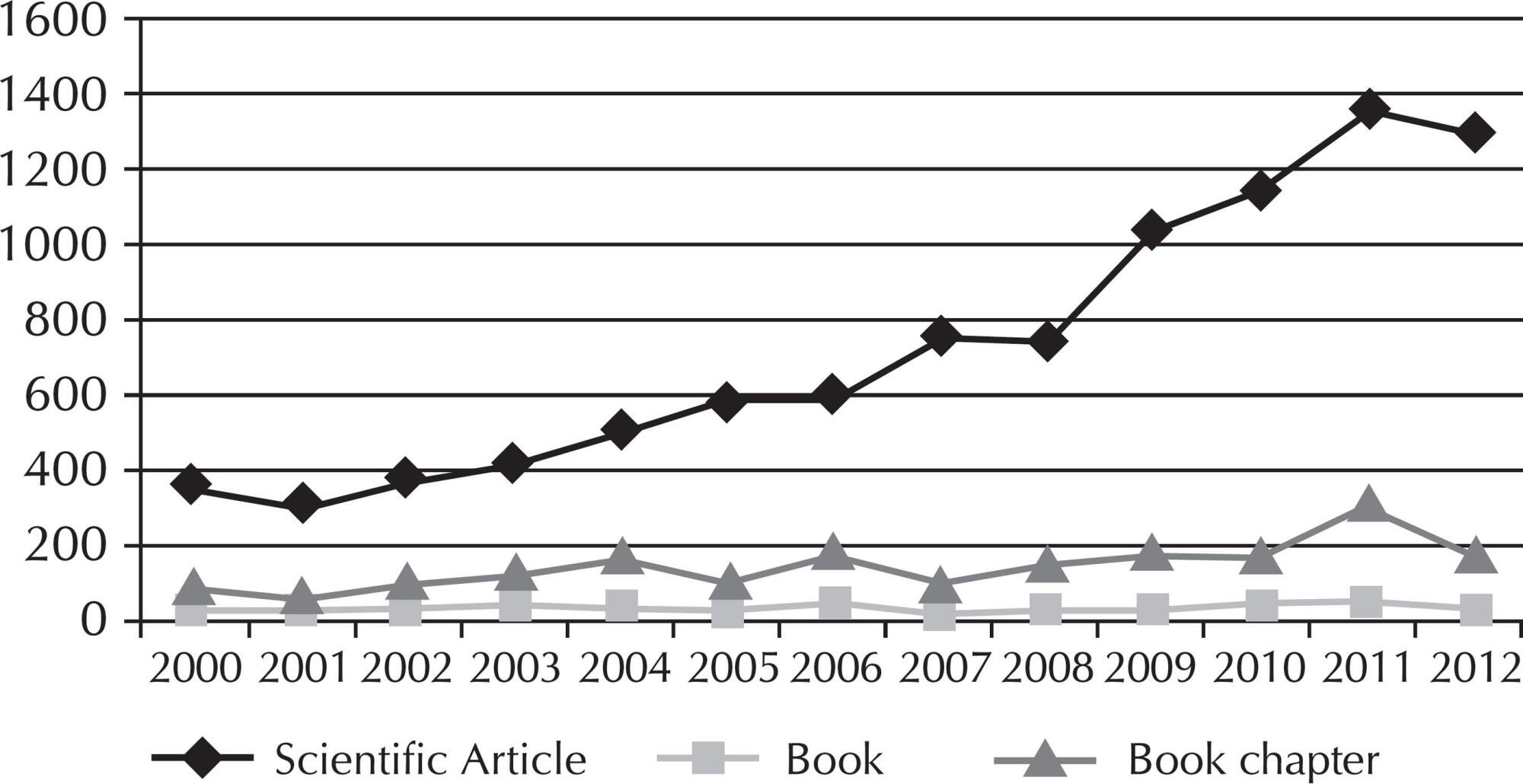
-
01-01-2015
Structure, process and outcomes of organ and tissue donation for transplantation
Revista Brasileira de Enfermagem. 2015;68(5):837-845
Abstract
Structure, process and outcomes of organ and tissue donation for transplantation
Revista Brasileira de Enfermagem. 2015;68(5):837-845
DOI 10.1590/0034-7167.2015680511i
Views0See moreABSTRACT
Objective:
to analyze the factors related to the structure, process and outcomes of organ and tissue donation for transplantation.
Method:
analytic, longitudinal and quantitative study, conducted in six hospitals in Natal/RN, between August 2010 and February 2011, with 65 potential donors (PD), by means of no participant observation structured script.
Results:
regarding the donation structure, there was deficiencies of physical resources (temperature control), materials (mobile radiology) human resources (nurse technicians) and lack of adequate records and care protocols. In the process of donation, the biggest problems were related to the evaluation stages, brain death diagnosis, maintenance and documentation, with greater proportion of care for the non-donor.
Conclusion:
the structure and process possibly determined the result of 72.3% no donation implementation of potential donors, indices compatible with the national data, but contradictory to those of Spain, which manages to transplant organs of 86.7% of its donors.
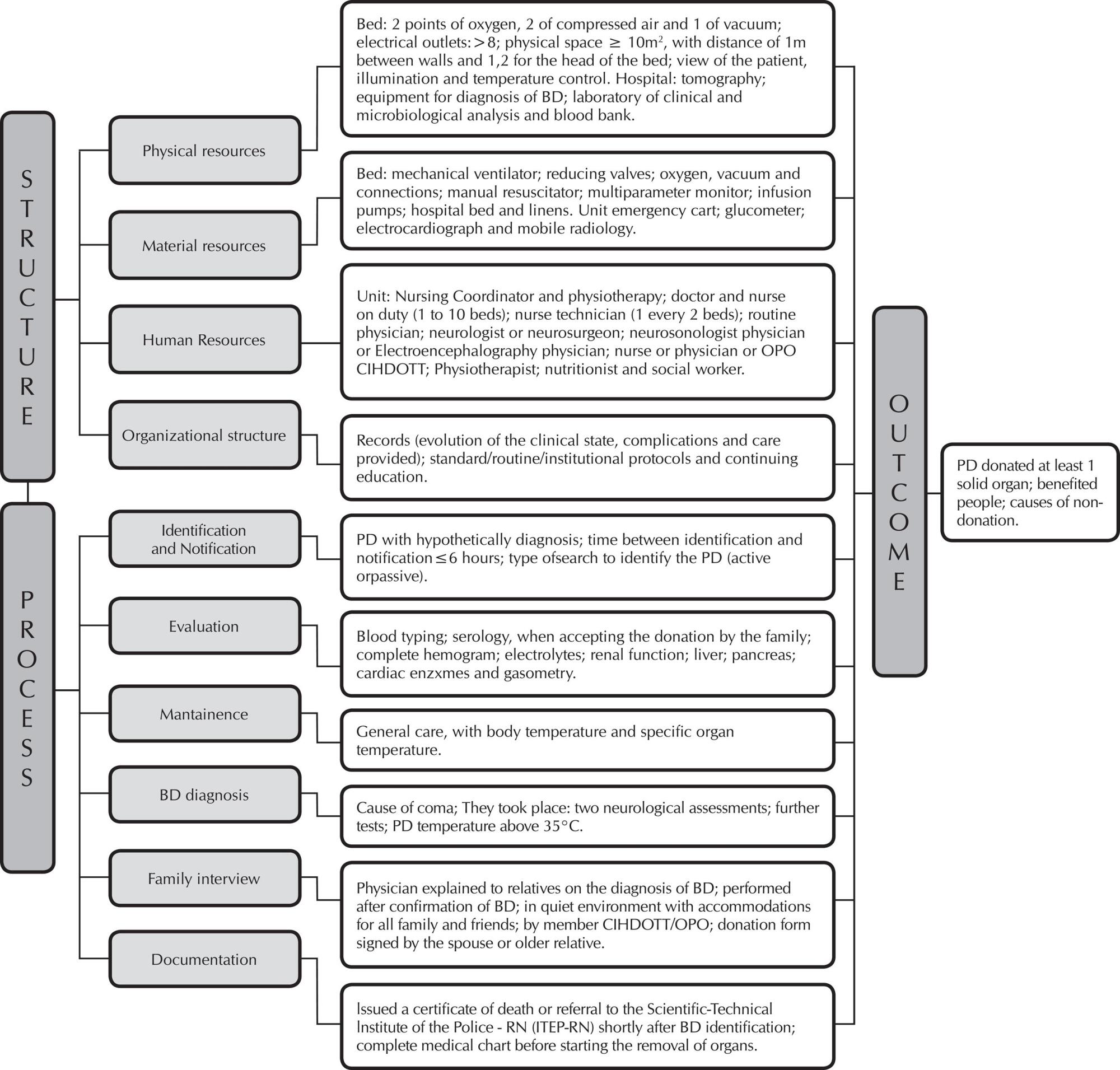
-
01-01-2015
The nurse in the area of collective health: conceptions and competencies
Revista Brasileira de Enfermagem. 2015;68(5):830-836
Abstract
The nurse in the area of collective health: conceptions and competencies
Revista Brasileira de Enfermagem. 2015;68(5):830-836
DOI 10.1590/0034-7167.2015680510i
Views0See moreABSTRACT
Objective:
to learn coordinators and professors’ conceptions from undergraduate Nursing courses of public universities in northern Brazil regarding collective health and to know the necessary competencies to work in the area.
Method:
data were collected through semi-structured interviews and subjected to thematic analysis.
Results:
the participants consider population health as an essential area for the training of nurses, where professionals have autonomy and confidence. It is an interdisciplinary, intersectoral and multidisciplinary field, with extensive scope, that studies the Unified Health System (SUS). The competencies to work in collective health identified were: to work at the SUS, to understand the health and disease process and its determinants and to develop actions towards integrality, to conduct health education, researches and systematization of the nursing care.
Conclusion:
the variety of conceptions about collective health among participants might reflect in training of nurses and their working area.
-
01-01-2015
Level of dependence among patients in a surgical unit
Revista Brasileira de Enfermagem. 2015;68(5):824-829
Abstract
Level of dependence among patients in a surgical unit
Revista Brasileira de Enfermagem. 2015;68(5):824-829
DOI 10.1590/0034-7167.2015680509i
Views0See moreABSTRACT
Objective:
to identify the complexity of the nursing care of inpatient surgical unit patients, using the Perroca patients classification scale.
Method:
a descriptive, cross-sectional study with 546 reviews of 187 patients between October and December of 2012. Data were analyzed using SPSS 18.0 and the Kappa test, to measure interrater agreement.
Results:
a predominance of patients in the categories of semi-intensive (46.5%) and intermediate care (44.0%) was found, with a prevalence of unassisted bath (58.4%) in the total sample, and bed bath (69.3%) in the semi-intensive care patients. The level of agreement between two pairs of raters was considered good.
Conclusion:
the systematic application of the instrument was useful as a complementary measure of the level of patient dependence, and may contribute to the improvement of the working process, refl ecting on management decision-making with regard to nursing workload
-
01-01-2015
Psychological violence in the nursing work
Revista Brasileira de Enfermagem. 2015;68(5):817-823
Abstract
Psychological violence in the nursing work
Revista Brasileira de Enfermagem. 2015;68(5):817-823
DOI 10.1590/0034-7167.2015680508i
Views0See moreABSTRACT
Objective:
to investigate and characterize psychological violence practices within teams in the relationship between patients, caregivers and other professionals with the nursing staff of the public hospital network of Caxias, in the State of Maranhão, Brazil.
Method:
descriptive, quantitative, cross-sectional study with data collected by form between November/2013-May/2014.
Results:
verbal aggression is the most common psychological violence subtype 95% (84), followed by bullying 27% (24). Emergency rooms 51% (45) are the most frequent place; patients 60% (53) are the main aggressors; nurses 76% (19) suffer more violence, being mostly female, young and inexperienced.
Conclusion:
the largest number of occurrences was of verbal aggression perpetrated by patients against nurses in the emergency room. Workers try to pretend that nothing happened or are inert in the face of violence. Employers do little about the case, referring to the need for strategies to control violence.
-
01-01-2015
Dietary intake and stress in patients with acute coronary syndrome
Revista Brasileira de Enfermagem. 2015;68(5):810-816
Abstract
Dietary intake and stress in patients with acute coronary syndrome
Revista Brasileira de Enfermagem. 2015;68(5):810-816
DOI 10.1590/0034-7167.2015680507i
Views0See moreABSTRACT
Objective:
to assess whether dietary intake of patients with acute coronary syndrome (ACS) meets national and international recommendations and whether there is a relationship with the levels of stress.
Method:
a cross-sectional study with 150 patients with ACS, who were interviewed with the Food Frequency Questionnaire and the Perceived Stress Scale-10.
Results:
daily intake above the recommendations: cholesterol (92%), fiber (42.7%) and protein (68%); intake below the recommendations: potassium (88%) and carbohydrates (68.7%); intake according to the recommendations: sodium (53.3%) and lipids (53.3%). Most patients with inadequate dietary intake (54%) were stressed or highly stressed. There was a signifi cant association between a lower stress level and a higher fi ber intake.
Conclusion:
in patients with ACS, dietary intake did not meet the guideline recommendations, and a lower fi ber intake occurs concomitantly with higher stress levels. Educational efforts can support patients in dietary intake adequacy and stress control.
-
REVIEW07-29-2022
Technologies used by nursing to predict clinical deterioration in hospitalized adults: a scoping review
Revista Brasileira de Enfermagem. 2022;75(5):e20210570
Abstract
REVIEWTechnologies used by nursing to predict clinical deterioration in hospitalized adults: a scoping review
Revista Brasileira de Enfermagem. 2022;75(5):e20210570
DOI 10.1590/0034-7167-2021-0570
Views1See moreABSTRACT
Objective:
to map the early clinical deterioration technologies used in nurses’ professional practice in the care of hospitalized adult patients.
Methods:
this is a scoping review, according to Joanna Briggs Institute Reviewer’s Manual, which seeks to map the main technologies for detecting early clinical deterioration of hospitalized patients available for use by nurses, summarizing them and indicating gaps in knowledge to be investigated.
Results:
twenty-seven studies were found. The most present variables in the technologies were vital signs, urinary output, awareness and risk scales, clinical examination and nurses’ judgment. The main outcomes were activation of rapid response teams, death, cardiac arrest and admission to critical care units.
Final considerations:
the study emphasizes the most accurate variables in patient clinical assessment, so that indicative signs of potential severity can be prioritized to guide health conducts aiming to intervene early in the face of ongoing clinical deterioration.
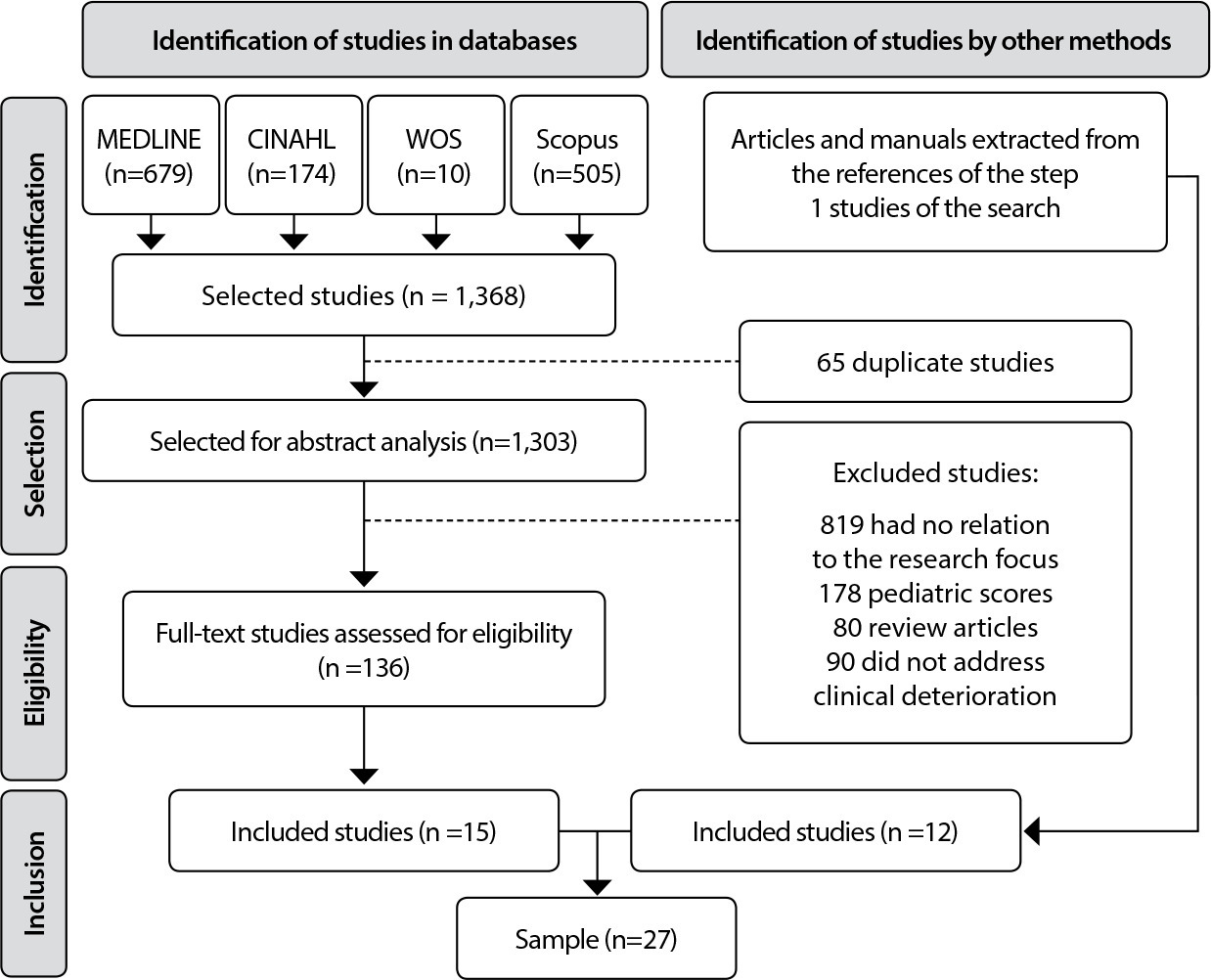
-
ORIGINAL ARTICLE05-09-2022
Core competencies for the training of advanced practice nurses in oncology: a Delphi study
Revista Brasileira de Enfermagem. 2022;75(5):e20210573
Abstract
ORIGINAL ARTICLECore competencies for the training of advanced practice nurses in oncology: a Delphi study
Revista Brasileira de Enfermagem. 2022;75(5):e20210573
DOI 10.1590/0034-7167-2021-0573
Views0See moreABSTRACT
Objective:
To map out and validate the core competencies for the training of advanced practice nurses in oncology.
Methods:
Exploratory-descriptive research with a quantitative approach using the Delphi technique. Initially, a matrix composed of six domains outlining 112 core competencies of the clinical nurse specialist in oncology was elaborated. The Likert scale was used to measure the degree of agreement. Data collection took place through the Google Forms® platform from February to May 2021. Data were compiled and analyzed based on expert suggestions and literature.
Results:
100 competencies achieved consensus (agreement level above 85.7%) in the first round; 13 new competencies were proposed by expert members; and 125 were validated during the Delphi technique.
Conclusion:
The mapping and validation of core competencies will allow the development of new training models aimed at advanced practice in oncology and future educational harmonization.
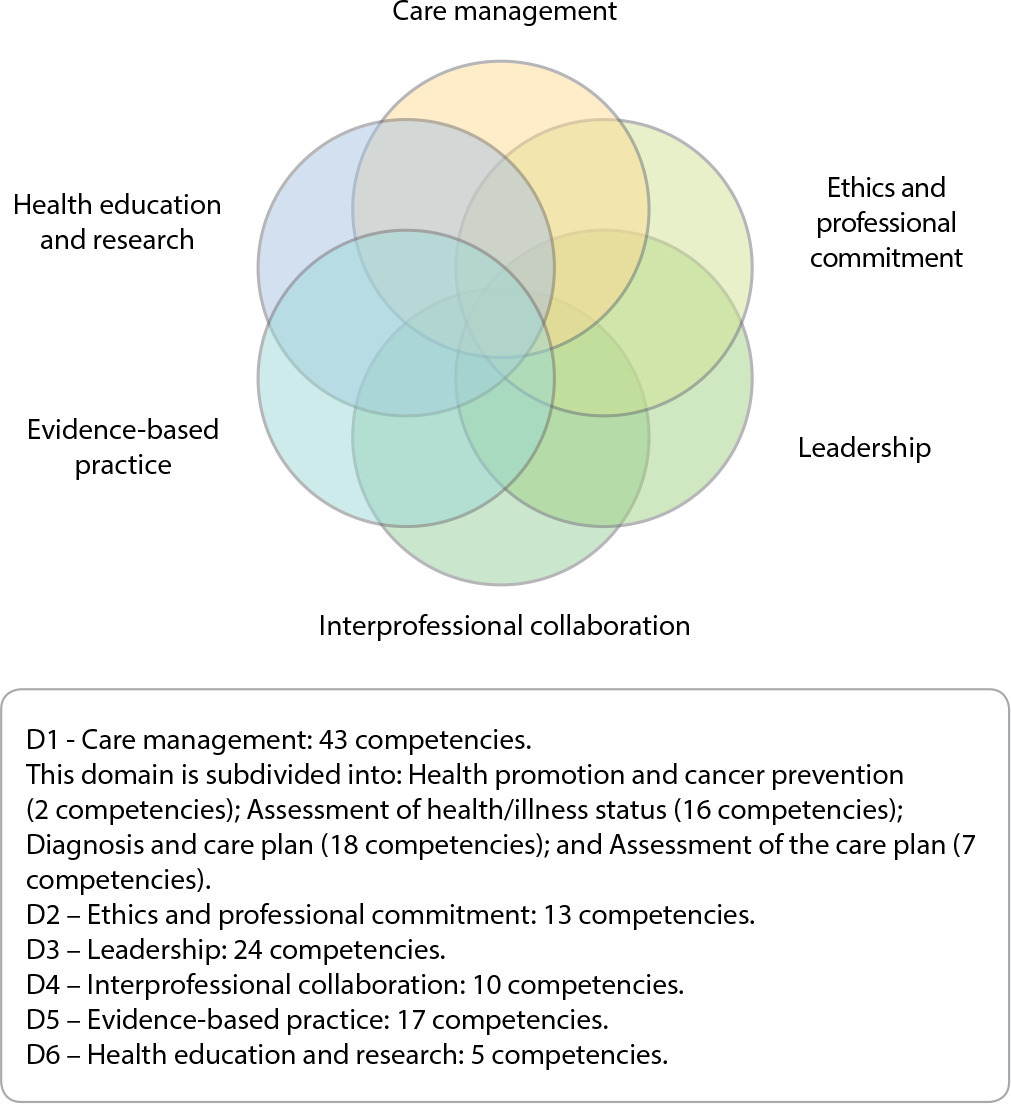
-
ORIGINAL ARTICLE10-21-2022
Technology for nursing consultation with transsexual women in the light of Leininger’s transcultural theory
Revista Brasileira de Enfermagem. 2022;75(5):e20210769
Abstract
ORIGINAL ARTICLETechnology for nursing consultation with transsexual women in the light of Leininger’s transcultural theory
Revista Brasileira de Enfermagem. 2022;75(5):e20210769
DOI 10.1590/0034-7167-2021-0769
Views0See moreABSTRACT
Objective:
to describe the construction and validation of a nursing consultation technology for transgender women.
Methods:
a methodological study developed in three stages with construction based on the Leininger’s Cross-Cultural Theory, content validation performed by experts in transgender sexual health and evaluation by nurses of care for transgender women. Items with a minimum agreement of 80% were considered validated, according to the Content Validity Index and binomial test.
Results:
the technology contains 59 items in three blocks: the first, for identification of the transsexual woman; the second, with the Clinical Data; and the third, regarding the Propaedeutics of Care. All items reached agreement higher than 0.8 and an overall Validity Index of 80%.
Conclusions:
the technology was content-validated and evaluated by nurses and can be applicable in clinical and outpatient practice as well as in academia to promote quality care for transgender women.
-
ORIGINAL ARTICLE07-22-2022
Cross-cultural adaptation, validation and reliability of the Medication Safety Thermometer tool for use in Brazil
Revista Brasileira de Enfermagem. 2022;75(5):e20210839
Abstract
ORIGINAL ARTICLECross-cultural adaptation, validation and reliability of the Medication Safety Thermometer tool for use in Brazil
Revista Brasileira de Enfermagem. 2022;75(5):e20210839
DOI 10.1590/0034-7167-2021-0839
Views0See moreABSTRACT
Objectives:
to perform cross-cultural adaptation, face and content validation and reliability analysis of the Medication Safety Thermometer tool for use in Brazil.
Methods:
the process of cross-cultural adaptation and validation followed the stages of translation, synthesis of translations, back-translation, content validation performed by experts, and face validation through pre-testing. Reliability was determined by calculating the Kappa coefficient.
Results:
the two translated versions were synthesized into a single version, which was back-translated and showed no divergences. The expert committee judged the adapted tool as equivalent, reaching a Content Validity Index higher than 0.8. The mean global understanding was 1.82, demonstrating face validity. The assessed items had Kappa coefficient greater than 0.61, showing agreement between observers.
Conclusions:
the cross-cultural adaptation of the tool was performed following an established methodology. The adapted tool showed inter-rater reliability and validity for use in Brazil.
-
ORIGINAL ARTICLE08-15-2022
Construction and validation of an educational video for patients in the perioperative period of robotic surgery
Revista Brasileira de Enfermagem. 2022;75(5):e20210952
Abstract
ORIGINAL ARTICLEConstruction and validation of an educational video for patients in the perioperative period of robotic surgery
Revista Brasileira de Enfermagem. 2022;75(5):e20210952
DOI 10.1590/0034-7167-2021-0952
Views1See moreABSTRACT
Objectives:
to build and validate educational technology, of the video type, aimed at teaching about the perioperative period of robotic surgery.
Methods:
methodological development study, following the integrative review phases: pre-production, production, post-production, and validation. The video was evaluated for content and appearance by 14 judges. Content validity (CVI) and appearance (AVI) and agreement (CI) indices were calculated, and the exact binomial test was applied, considering p>0.05 and a proportion of 0.80 of agreement.
Results:
the video included 13 themes, with a duration of seven minutes and 33 seconds. The items of the three dimensions evaluated presented excellent CVI, ranging between 0.86 and 1.00 (p>0.05), with a total CVI of 0.95, VAT of 0.94 and CI equal to 61.5%.
Conclusions:
the video included 13 themes, with a duration of seven minutes and 33 seconds. The items of the three dimensions evaluated presented excellent CVI, ranging between 0.86 and 1.00 (p>0.05), with a total CVI of 0.95, VAT of 0.94 and CI equal to 61.5%.
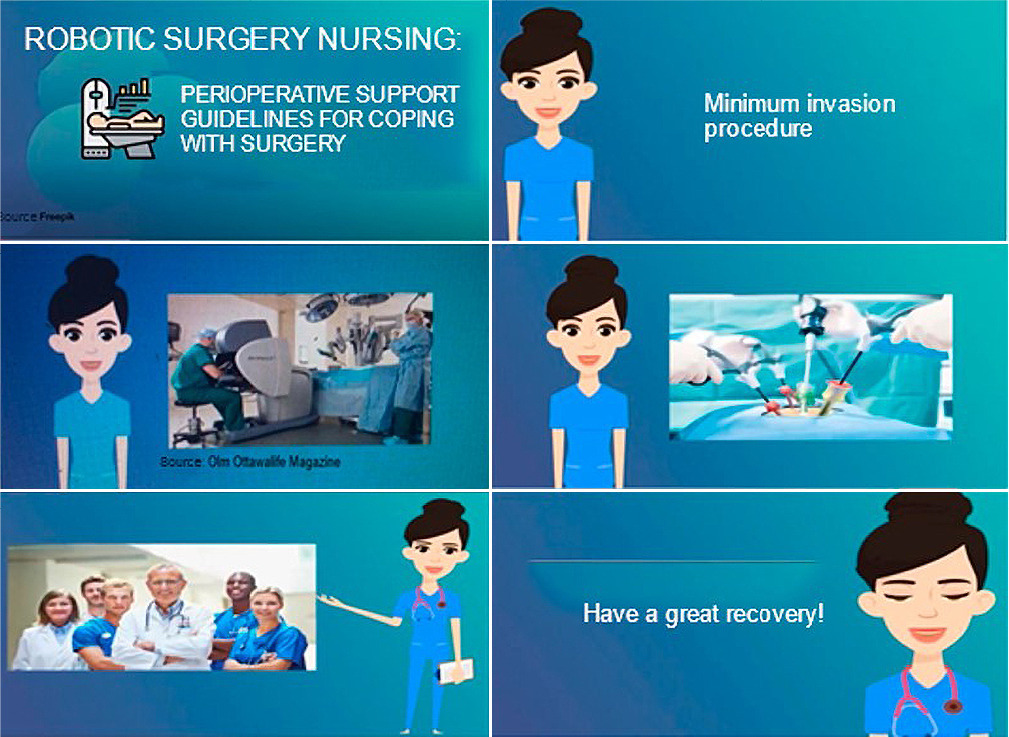
-
ORIGINAL ARTICLE09-26-2022
Educational technology for infants’ families to identify warning signs: a validation study
Revista Brasileira de Enfermagem. 2022;75(5):e20210964
Abstract
ORIGINAL ARTICLEEducational technology for infants’ families to identify warning signs: a validation study
Revista Brasileira de Enfermagem. 2022;75(5):e20210964
DOI 10.1590/0034-7167-2021-0964
Views0See moreABSTRACT
Objective:
To validate, with the target audience, the usability and appearance of a serialized album about the warning signs to the health of children below 2 months.
Method:
Methodological validation study with the target population of an educational material in the form of a serialized album. 11 mothers with children under 2 months of age participated. The domains evaluated were: Objectives, Organization, Writing Style, Appearance, and Motivation. Data were analyzed using descriptive and statistics, and the data agreement index was calculated.
Results:
The global data agreement index was high (0.99). Mothers had positive responses, recognizing the excellence of the material: attractive figures that were easy to understand.
Conclusion:
The validation of the serialized album provides mothers with the abilities and knowledge they need to identify warning signs in regard to the health of their children, providing them with autonomy, corresponsibility, and helping them develop better child health practices.
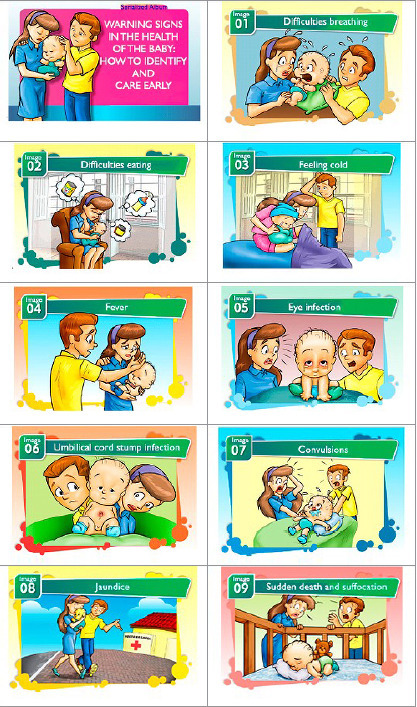
-
ORIGINAL ARTICLE10-17-2022
Validation of the Brazilian Portuguese version of the Venous International Assessment Scale and proposal of revision
Revista Brasileira de Enfermagem. 2022;75(5):e20220100
Abstract
ORIGINAL ARTICLEValidation of the Brazilian Portuguese version of the Venous International Assessment Scale and proposal of revision
Revista Brasileira de Enfermagem. 2022;75(5):e20220100
DOI 10.1590/0034-7167-2022-0100
Views0See moreABSTRACT
Objective:
To validate the Brazilian Portuguese translation and analyze the cultural adaptation of the Venous International Assessment Scale.
Methods:
Observational study by employing the Delphi technique and an equivalence evaluation by experts. The results were analyzed using item scores and by content validity index calculations of item, scale, and universal agreement.
Results:
Three rounds of evaluation were necessary for consensus. Explanatory contents were incorporated into the original scale throughout the process, resulting in a new version: VIA Scale – Revised. This scale obtained a content validity index of 0.96 and a universal agreement of 0.78. In the cross-cultural adequacy analysis phase, a score of 0.77 was obtained. The majority (90.5%) of the participants judged the scale’s decision support property as positive.
Conclusion:
The VIA Scale was validated and culturally adapted to the Brazilian Portuguese language, resulting in the VIA Scale – Revised (VIA-R).
-
ORIGINAL ARTICLE07-29-2022
Effects of guided imagery relaxation in hematopoietic stem-cell transplantation patients: a quasi-experimental study
Revista Brasileira de Enfermagem. 2022;75(5):e20220114
Abstract
ORIGINAL ARTICLEEffects of guided imagery relaxation in hematopoietic stem-cell transplantation patients: a quasi-experimental study
Revista Brasileira de Enfermagem. 2022;75(5):e20220114
DOI 10.1590/0034-7167-2022-0114
Views1See moreABSTRACT
Objective:
To analyze the effects of the technique of virtual reality guided imagery in the vital signs of hematopoietic stem-cell transplantation patients.
Method:
Quasi-experimental study with 35 participants who received an intervention using virtual reality guided imagery with progressive muscle relaxation, applied three times a week for four weeks in a referral hospital for transplants in the south of Brazil. Data collected included: temperature, arterial pressure, respiratory rate, heart rate, pain, and oxygen saturation, before and after each intervention. The comparisons were analyzed using Wilcoxon’s test.
Results:
There was a clinical significance between the mean measurements before and after for respiratory rate (p=0.00) in all stages, and for the variables Heart rate, Temperature, and Oxygen saturation from the 1st to the 12th measurements (p=0.05).
Conclusion:
The intervention was low cost, easy to apply, and showed positive effects, presenting itself as an option for patient-focused care.
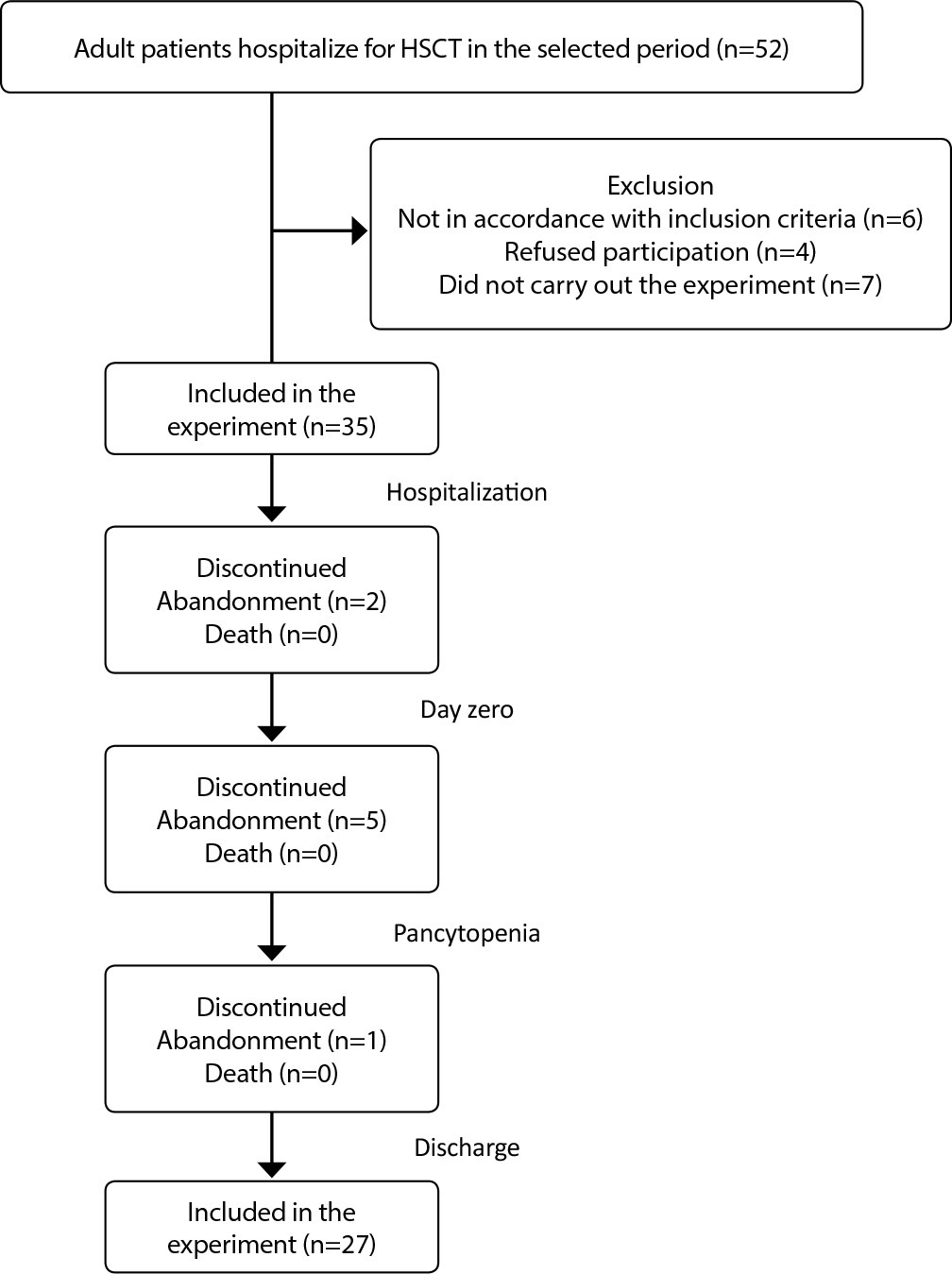
-
ORIGINAL ARTICLE07-13-2020
Mental health of nursing in coping with COVID-19 at a regional university hospital
Revista Brasileira de Enfermagem. 2020;73:e20200434
Abstract
ORIGINAL ARTICLEMental health of nursing in coping with COVID-19 at a regional university hospital
Revista Brasileira de Enfermagem. 2020;73:e20200434
DOI 10.1590/0034-7167-2020-0434
Views0See moreABSTRACT
Objective:
to identify prevalence and factors associated with anxiety and depression in nursing professionals who work to cope with COVID-19 at a university hospital.
Methods:
a cross-sectional observational study using a sociodemographic questionnaire and Hospital Anxiety and Depression Scale, with 88 nursing professionals. Data were analyzed using absolute and relative frequency and Statistical Package for the Social Sciences.
Results:
there was prevalence of anxiety (48.9%) and depression (25%). The majority of the sample consisted of women over 40 years old, married or in a common-law marriage, white, with higher education or graduate degree, with an income above 3,000.00 reais, public servants, working 40 hours a week and working in the hospital from 1 to 5 years.
Conclusion:
we must consider the impact on mental health nursing caused by COVID-19 and intervene with coping strategies to minimize the suffering of professionals.
-
REFLECTION04-22-2020
Thematic content analysis using ATLAS.ti software: Potentialities for researchs in health
Revista Brasileira de Enfermagem. 2020;73(3):e20190250
Abstract
REFLECTIONThematic content analysis using ATLAS.ti software: Potentialities for researchs in health
Revista Brasileira de Enfermagem. 2020;73(3):e20190250
DOI 10.1590/0034-7167-2019-0250
Views0See moreABSTRACT
Objective:
to describe the most important tools of ATLAS.ti Software and to associate them with the procedures of Thematic Content Analysis.
Method:
It is a theoretical reflection of the Content Analysis phases of Laurence Bardin, associating them with software tools Atlas.ti and showing its usefulness for data analysis in qualitative research.
Results:
historical contextualization and the available resources of Atlas.ti software with presentation of health research involving the phases of thematic content analysis.
Final considerations:
The Atlas.ti software assists in the accomplishment of the thematic content analysis being this promising association in health research.

-
REFLECTION10-26-2020
Nursing education: challenges and perspectives in times of the COVID-19 pandemic
Revista Brasileira de Enfermagem. 2020;73:e20200683
Abstract
REFLECTIONNursing education: challenges and perspectives in times of the COVID-19 pandemic
Revista Brasileira de Enfermagem. 2020;73:e20200683
DOI 10.1590/0034-7167-2020-0683
Views0See moreABSTRACT
Objective:
To discuss the challenges and perspectives of nursing education in times of the COVID-19 pandemic.
Methods:
Reflection study, with theoretical approach based on national and international publications, allied to the experience of researchers in the area of nursing education.
Results:
Four sections are identified: Nursing education: current affairs and perspectives; Education and technologies in time of pandemic: acceleration, alteration and paralysis; Difference between emergency, intentional and remote teaching; the return to the “new normality”: new structuring axes and legal norms.
Final considerations:
The conclusion is that longstanding challenges have emerged with the pandemic, and the processes of acceleration, change and paralysis have marked education in these times. Moreover, epidemiological, technological and psychological aspects should be more valued in the return to activities.
-
ORIGINAL ARTICLE11-13-2020
Social determinants of health and COVID-19 infection in Brazil: an analysis of the pandemic
Revista Brasileira de Enfermagem. 2020;73:e20200673
Abstract
ORIGINAL ARTICLESocial determinants of health and COVID-19 infection in Brazil: an analysis of the pandemic
Revista Brasileira de Enfermagem. 2020;73:e20200673
DOI 10.1590/0034-7167-2020-0673
Views0See moreABSTRACT
Objective:
To analyze the influence of socioeconomic, demographic, epidemiological factors, and the health system structure in the evolution of the COVID-19 pandemic in Brazil.
Methods:
Ecological study with variables extracted from databases, having the incidence and mortality by COVID-19 until August 23, 2020, in Brazilian states, as response variables. The magnitude of the associations was estimated using Spearman’s correlation coefficient and multiple regression analysis.
Results:
In the Brazilian states, 59.8% of variation in the incidence of COVID-19 was justified by income inequality, significant home densification, and higher mortality. In the case of mortality, those same variables explained 57.9% of the country’s variations in federal units.
Conclusion:
Our results indicate that socioeconomic factors influenced the evolution and impact of COVID-19 in Brazil. Thus, we suggest comprehensive actions to ensure economic conditions and strengthening of health networks for populations with socioeconomic vulnerability.
-
ORIGINAL ARTICLE02-27-2020
Prevalence of symptoms and quality of life of cancer patients
Revista Brasileira de Enfermagem. 2020;73(2):e20180287
Abstract
ORIGINAL ARTICLEPrevalence of symptoms and quality of life of cancer patients
Revista Brasileira de Enfermagem. 2020;73(2):e20180287
DOI 10.1590/0034-7167-2018-0287
Views0See moreABSTRACT
Objectives:
to analyze the prevalence of symptoms and their relationship with the quality of life of cancer patients.
Methods:
this is a cross-sectional study with 107 patients evaluated using a sociodemographic instrument, the hospital anxiety and depression scale (HADS) and the quality of life scale (EORTC-QLQ-C30). Pearson’s correlation test was used to evaluate the relationship between symptoms and quality of life.
Results:
prevalence of female patients (56.1%), 55 years as the mean age and 10 years of schooling. Fatigue (76.6%), insomnia (47.7%), pain (42.1%), loss of appetite (37.4%), anxiety (31.8%) and depression (21.5%) were identified. Anxiety and depression symptoms presented a negative correlation with quality of life and positive correlation with physical symptoms.
Conclusions:
fatigue, insomnia, pain and loss of appetite were the most common and most intense symptoms. Anxiety and depression symptoms presented a negative correlation with quality of life and positive correlation with physical symptoms.
-
ORIGINAL ARTICLE08-10-2020
Braden Scale in pressure ulcer risk assessment
Revista Brasileira de Enfermagem. 2020;73(6):e20190413
Abstract
ORIGINAL ARTICLEBraden Scale in pressure ulcer risk assessment
Revista Brasileira de Enfermagem. 2020;73(6):e20190413
DOI 10.1590/0034-7167-2019-0413
Views0See moreABSTRACT
Objective:
To analyze the applicability of the Braden Scale to individuals admitted to an Intensive Care Unit (ICU) with the nursing diagnosis Impaired Physical Mobility, in its prediction potential to develop pressure ulcer (PU).
Methods:
A cross-sectional, quantitative study that evaluated all patients hospitalized in an ICU between November 2016 and February 2017, with the Braden Scale.
Results:
The prevalence of PU was 35.8% (24/67), in male individuals 58.3% (14/24), diagnosed with ischemic CVA 51.9% (12/27), and with hemorrhagic CVA 7.4% (2/27). Among patients classified at severe risk of developing pressure ulcer, 83.3% (20/53) developed it, and 76.7% (33/53) did not develop it.
Conclusion:
The performance of the Braden Scale showed a balance between sensitivity and specificity, confirming it as a better predictive risk assessment instrument in this group of patients.
-
REVIEW03-24-2021
Strategies of active learning methodologies in nursing education: an integrative literature review
Revista Brasileira de Enfermagem. 2021;74(1):e20200130
Abstract
REVIEWStrategies of active learning methodologies in nursing education: an integrative literature review
Revista Brasileira de Enfermagem. 2021;74(1):e20200130
DOI 10.1590/0034-7167-2020-0130
Views0See moreABSTRACT
Objectives:
to analyze the scientific evidence on the strategies of active learning methodologies used in the training of nurses, as well as their contributions and obstacles in training.
Methods:
integrative literature review conducted with 33 selected articles in the Medical Literature Analysis and Retrieval System Online, Latin American and Caribbean Literature in Health Sciences, Nursing Database, Scopus, Web of Science and Education Resources Information Center databases.
Results:
among the strategies, simulation, problem-based learning and flipped classroom were highlighted. The active search, the integration of theory and practice and group work were examples of contributions to the training of nurses. However, the lack of preparation of the actors and the lack of structural support contribute to the dissatisfaction of the students.
Final Considerations:
the active learning methodology places the student at the heart of the learning process, favors critical thinking and the ability to make decisions.
-
ORIGINAL ARTICLE09-16-2019
Validation of educational booklet: an educational technology in dengue prevention
Revista Brasileira de Enfermagem. 2019;72(5):1318-1325
Abstract
ORIGINAL ARTICLEValidation of educational booklet: an educational technology in dengue prevention
Revista Brasileira de Enfermagem. 2019;72(5):1318-1325
DOI 10.1590/0034-7167-2018-0771
Views0See moreABSTRACT
Objective:
to validate a booklet on dengue prevention in order to make it an educational technology to be used with the population.
Method:
methodological study, carried out with two groups of judges specialized in health and other areas. For data analysis, the calculation of Content Validity Index was carried out.
Results:
the booklet, in general, was considered valid by the expert judges, since it obtained an overall CVI of 70%. However, it has undergone a textual and aesthetic re-elaboration. The changes were based on the substitution of expressions, phrases, information additions and language adequacy. The illustrations were redone, adding clarity, expressiveness, movement, interaction and contextualization.
Conclusion:
the booklet is valid to be used for the population, with the purpose of informing, in a playful way, the forms of prevention and combat to mosquito transmitting dengue.

Search
Search in:
Nuvem de Tags
Adolescente (85) Atenção Primária à Saúde (239) COVID-19 (91) Criança (91) Cuidados de Enfermagem (269) Educação em Enfermagem (151) Educação em Saúde (139) Enfermagem (930) Enfermagem Pediátrica (86) Estudantes de Enfermagem (77) Estudos de Validação (131) Família (87) Idoso (208) Promoção da Saúde (99) Qualidade de Vida (104) Saúde do Trabalhador (86) Saúde Mental (145) Saúde Pública (82) Segurança do Paciente (150) Tecnologia Educacional (100)



